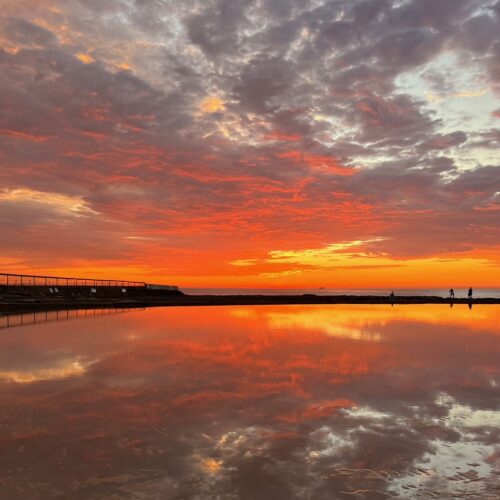
By Jill Lowe
“I really don’t know clouds at all.”
-Joni Mitchell
And if we do want more knowledge of clouds, we can defer to the nephologists (from that branch of meteorology) who study cloud formation and their nomenclature. Or why not go to the app of the Cloud Appreciation Society CLOUD-A-DAY? (described in more detail later)
These images represent some of the beauty we see above in different skies.

Whatever we understand about clouds it takes no knowledge to be amazed.

Elementary school taught us the rudimentary classification of clouds and there is plenty of opportunity for more education. There are increasing numbers of flammagenitus clouds, or pyrocumulus or fire storm clouds, a dense large cumulus cloud often associated with fires or volcanoes that appear to be on fire. NASA calls this type of cloud “the fire-breathing dragon of clouds” because they funnel smoke like a chimney into the Earth’s atmosphere, while hurling thunderbolts, wind and rain. These clouds appear beautiful but the origin of the beauty is sobering.

It seems that the most dramatic cloud formations are at sunrise and sunset as well as with impending weather fronts. Skilled people can read many of these clouds, but lore and adages abound. From the Library of Congress Everyday Mysteries Meteorology, Climatology, it is suggested that the old adage “red sky at night, sailors’ (or shepherds’) delight, red sky in the morning, sailors’ (or shepherds’ ) take warning” does have some merit. But the reliability depends on the predominant direction of weather systems. In areas of the world where weather systems move routinely from the west to the east, the “red sky” proverb often holds true.
A red sunrise suggests that an area of high pressure and fine weather, with its trapped dust and other particles, is moving toward the east. This allows for an area of lower pressure and deteriorating weather – perhaps a cold front and band of rain – to move in from the west during the day.
On the other hand, a red sunset tells us the worst of the weather has now eased, with higher pressure and improving weather approaching from the west for the following day. The amounts of water vapor and dust particles in the atmosphere are good indicators of weather conditions. This also determines which colors we will see in the sky, because those colors are due to the rays of sunlight split into colors of the spectrum as they pass through the atmosphere
and ricochet off the water vapor and particles in the atmosphere.
At sunrise and sunset, the sun is low in the sky, and it transmits light through the thickest part of the atmosphere. We see the red, because red wavelengths (the longest in the color spectrum) are breaking through the atmosphere. Certainly, the colorful spectacles are frequent.
 |
 |

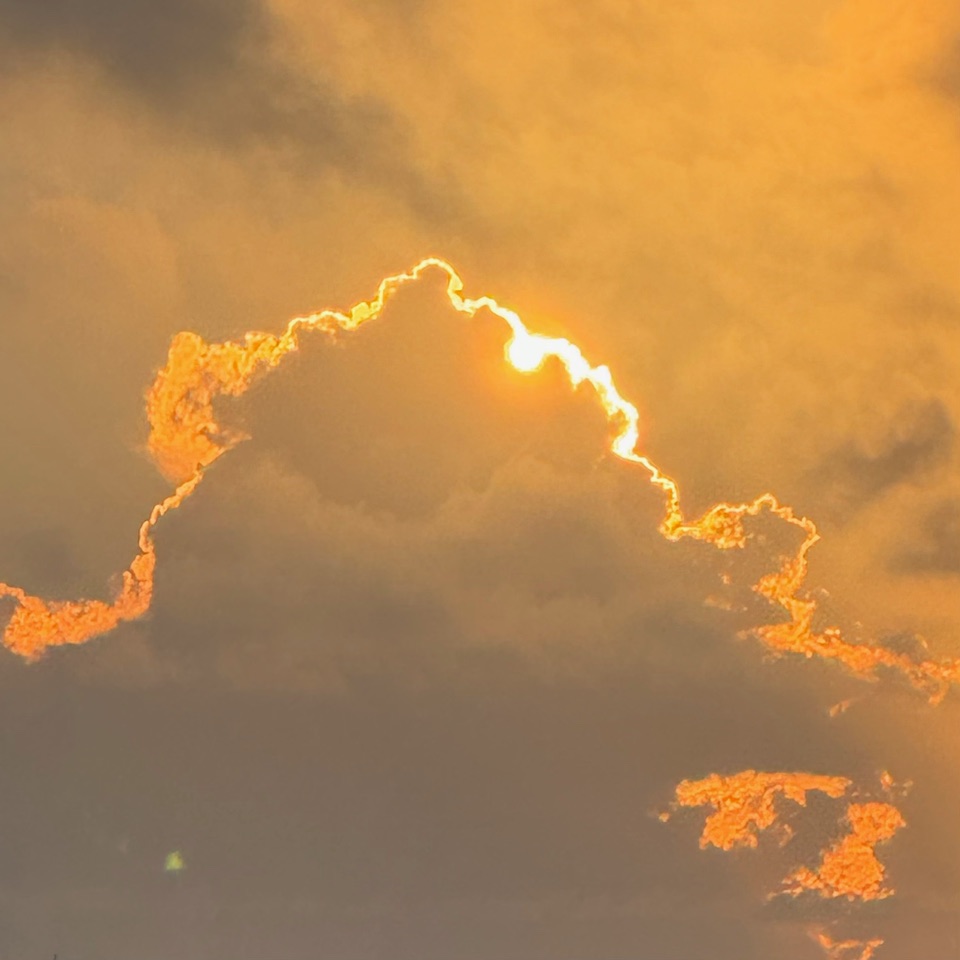

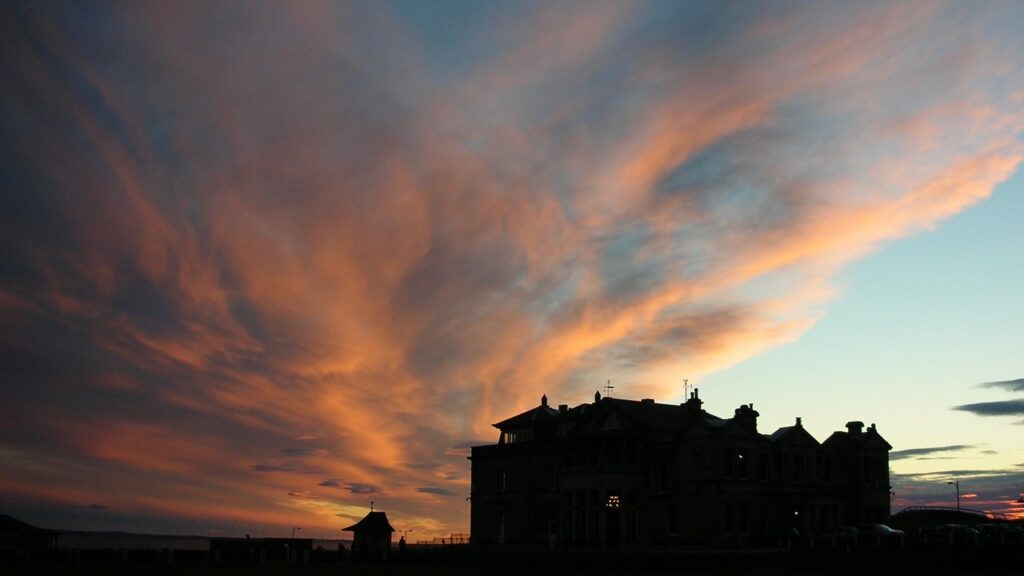

If departing on a flight on a dismal day in whatever part of the world, what an uplifting of spirits occurs when piercing the clouds to the brilliant blue of the sky.

More glorious cloud colors


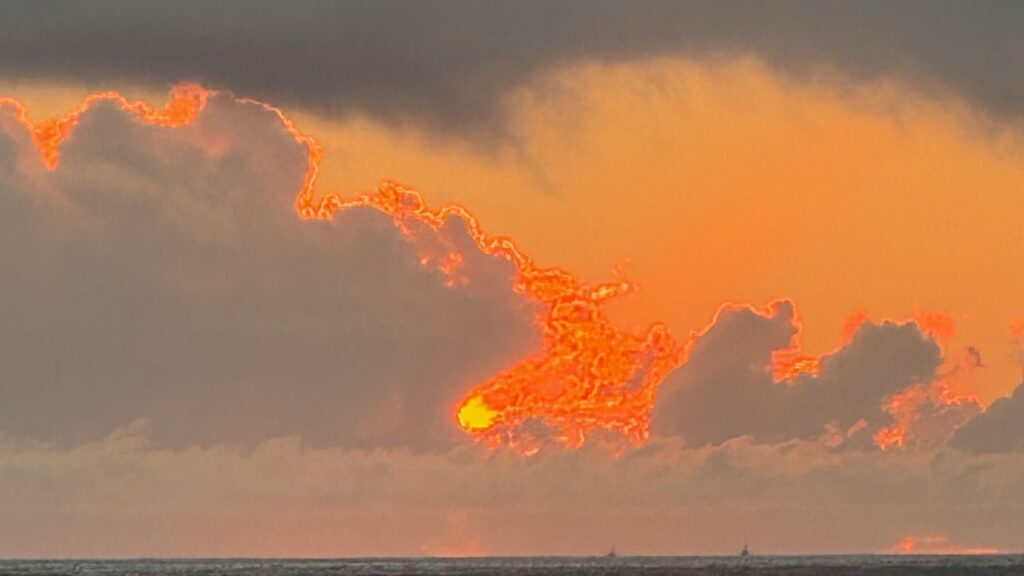
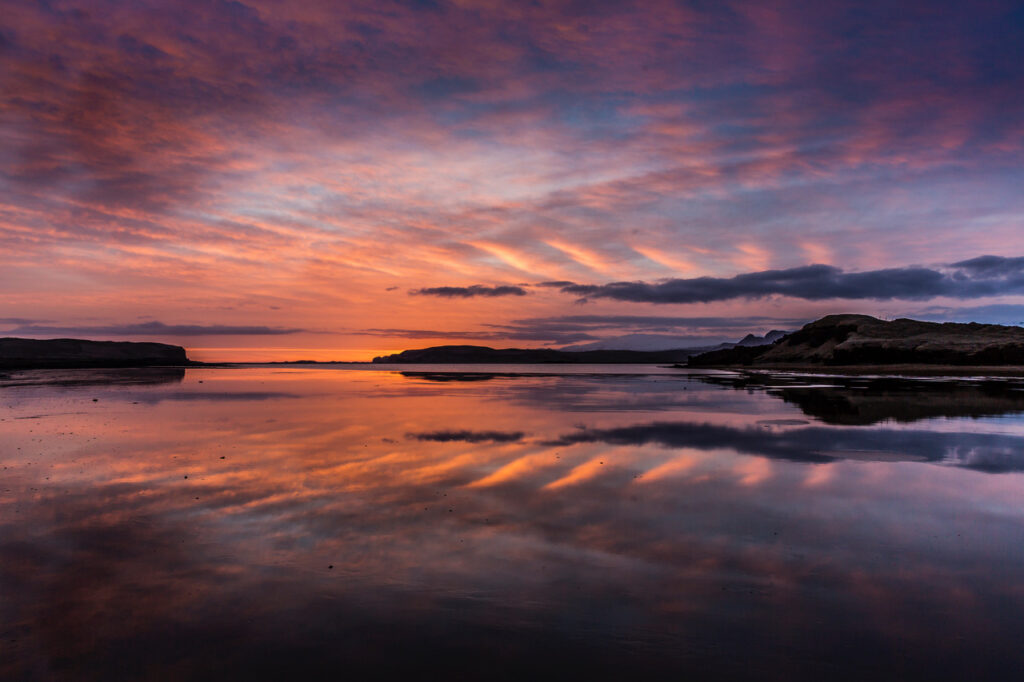
Photos above and below are courtesy of Jamen Percy
Both photos are the same location at sunset, at an ocean inlet area at high tide that provided the mirror reflection of the clouds.
The below one includes the photographer with assistance of a tripod.

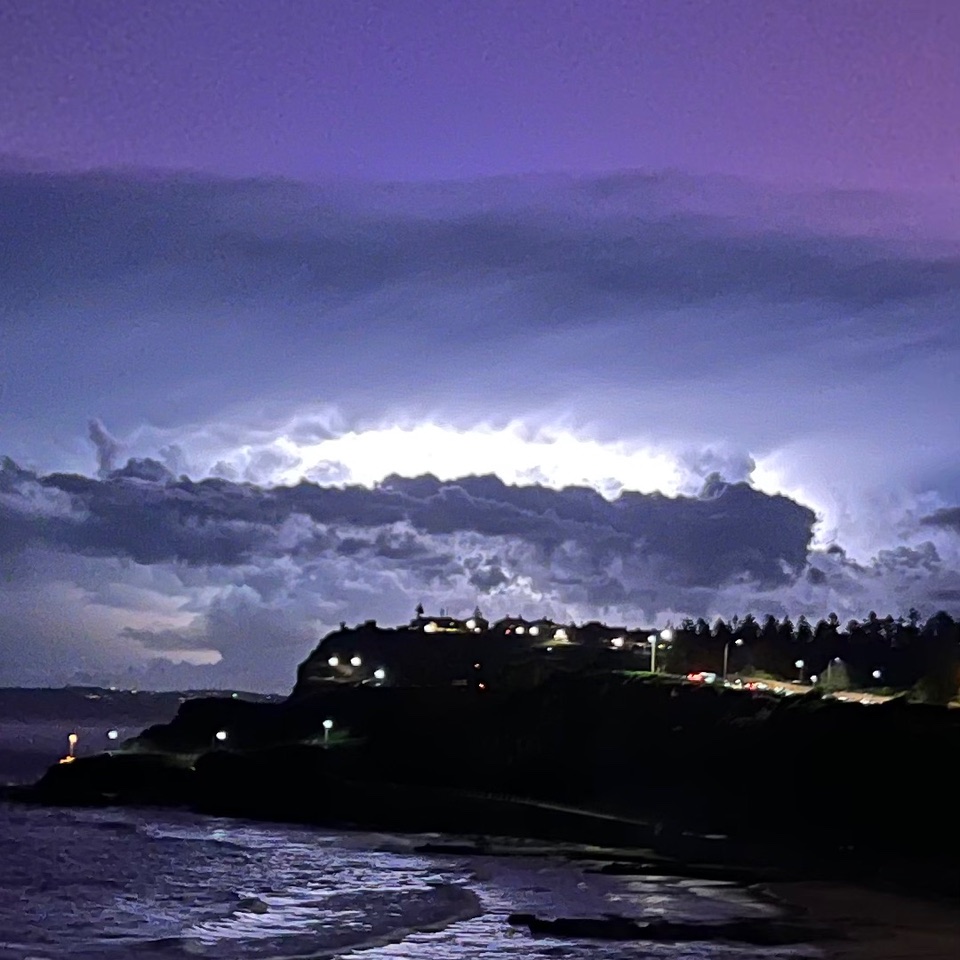
Clouds illuminated by lightning

Distant rain
For information on cloud development and precipitation, go to the National Weather Service Site by clicking here.
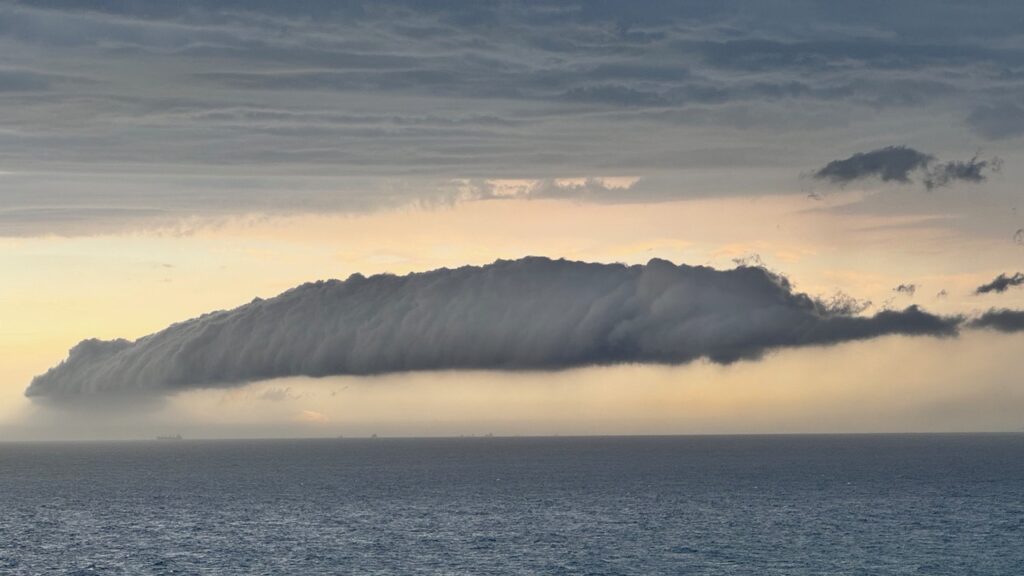

We have double the enjoyment when clouds are reflected!
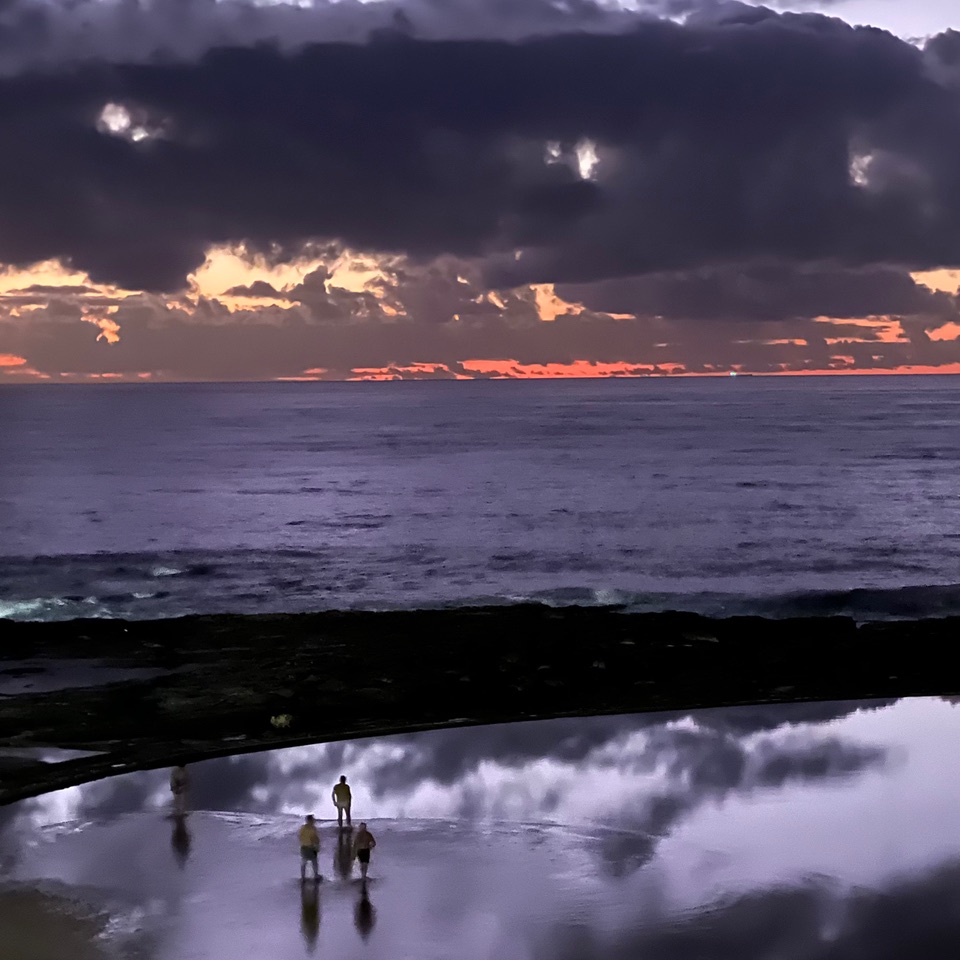
The concept of a cloud is used as a metaphor for remote data storage, because information is
stored on remote servers and not individuals’ computers.
The “cloud” data storage metaphor needs pictorial references to explain.

What about the sayings derived from clouds?
Here are a few…..
To be on “cloud nine” means to be extremely happy.
And its origin? One commonly cited explanation is that the expression derives from the classifications of clouds defined by the US Weather Bureau in the 1950s, in which “Cloud Nine” is listed as the fluffy cumulonimbus type considered to be the most attractive of all cloud formations. Others claim that the phrase comes from Buddhism. In this explanation Cloud Nine is one of the stages of the progress to one who is destined to become a Buddha. However, it is argued that neither of these theories are very likely. First of all because both the cloud classifications and the Buddhist stages to enlightenment, have ten levels rather than nine.
So the attachment of numbers is fluid. I mean some might even refer to 8th heaven, or is 7th heaven cemented?
“To have one’s head in the clouds” means to be out of touch with reality on the ground below.
Then there’s “every cloud has a silver lining,” which is used to talk about an unseen benefit.
“Under a cloud” means someone who is down on luck or depressed.

The Cloud-a-Day app created by The Cloud Appreciation Society has an interesting origin.
Gavin Pretor-Pinney has commenced whimsical ventures which pit themselves against the business of modern life and one such venture saw him as co-founder of the British magazine The Idler, which is devoted to restoring dignity to loafing.
The magazine was a great success, but over time it became seriously hard work. On a whim, Gavin founded the Cloud Appreciation Society with the slogan “uniting cloud lovers around the world.” Now with 54,000 members, the wealth of information on the website of the society, as well as the app is breathtaking.
Pretor-Pinney also wrote a book A Cloud a Day even more in-depth information.
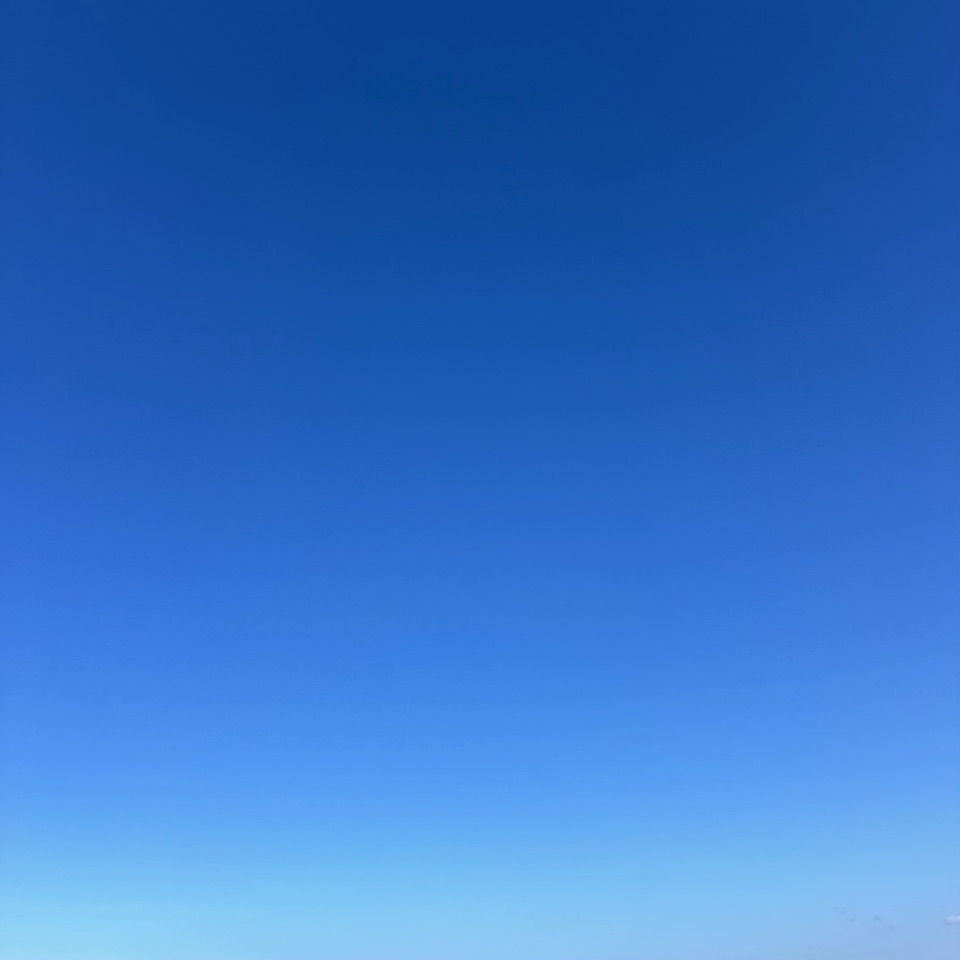
Although there are beautiful clouds, there is also a lot to be said for a day with not a cloud in the sky.

Even though my knowledge amounts to those of the lyrics below, aren’t clouds simply marvelous to watch? Joni Mitchell is Canadian, but there is a Chicago connection as she is quoted as saying, “I was reading Saul Bellow’s Henderson the Rain King, and was inspired to write the lyrics.” Born in Canada, Saul Bellow is claimed by Chicago and it is the backdrop for many of his novels.
“I’ve looked at clouds from both sides now
From up and down and still somehow
It’s cloud illusions I recall
I really don’t know clouds at all.”
-Joni Mitchell from Both Sides Now
Notes and Links:
Photo of Jill by Joe Mazza, Bravelux inc.
Photos copyright © 2024 Jill Lowe. All rights reserved
Images from Shutterstock license
Photos courtesy Jamen Percy credited with the images.
Cloud Appreciation Society Ted Talk



